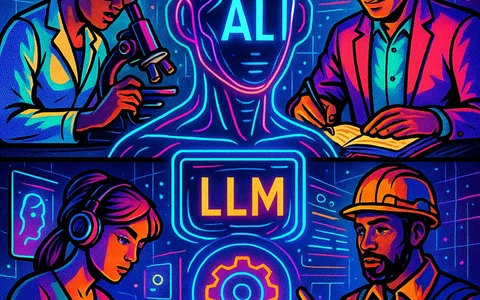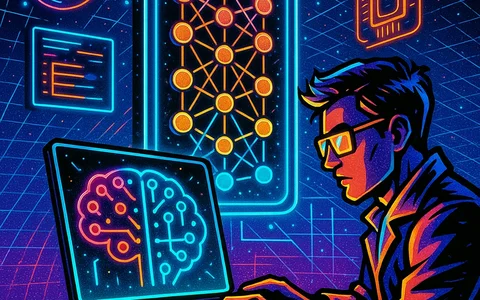Future of Large Language Models: Trends and Breakthroughs in AI Research
Explore the future trends and potential breakthroughs in large language models (LLMs) and their impact on AI and NLP innovation.

Future of Large Language Models: Trends and Breakthroughs in AI Research
At a Glance
- Transformers dominate LLM architecture, enabling unprecedented language understanding and generation.
- Multimodal capabilities are expanding LLM applications beyond text, including images and audio.
- Efficiency and scalability improvements are making LLMs more accessible and practical.
- Ethical concerns such as bias and transparency remain central to future research.
- Cross-disciplinary impacts are transforming sectors like healthcare, finance, and autonomous systems.
Introduction to Large Language Models (LLMs)
What Are Large Language Models?
Large Language Models (LLMs) are sophisticated AI systems trained on vast datasets to understand, generate, and interpret human language. They are capable of performing a variety of tasks—from translation and summarization to complex reasoning—by leveraging deep learning techniques. Unlike earlier statistical models, LLMs utilize advanced neural architectures to capture nuanced language patterns, making their outputs more coherent and contextually relevant.
Key Technologies Behind LLMs (Transformers, Deep Learning)
The backbone of modern LLMs is the transformer architecture, introduced in 2017. This innovation allows models to handle long-range dependencies in data through mechanisms like self-attention, enabling parallel processing and efficient training. Deep learning techniques, combined with large-scale training on diverse datasets, empower these models to achieve human-like language understanding. Notable models such as GPT-4, BERT, and PaLM exemplify these technological advancements.
Current State of LLM Research

Major Players and Recent Advancements
Leading tech giants and research institutions are continuously pushing the boundaries of LLM capabilities. Google’s BERT introduced bidirectional attention, significantly improving context understanding, while OpenAI’s GPT series has set benchmarks in text generation. Meta’s LLaMA offers competitive performance with fewer parameters, making large-scale models more resource-efficient. Google’s PaLM excels in few-shot learning and multilingual tasks, demonstrating versatility across languages and applications (KDnuggets).
Recent breakthroughs include models like Google DeepMind’s Gemini, which handles text, images, and code efficiently, and Mistral, a French startup’s model optimized for inference and reasoning. Additionally, Chinese AI companies are developing models such as DeepSeek, utilizing sparsely activated Mixture-of-Experts transformers to deliver high performance at lower computational costs.
Innovations in Model Scaling and Efficiency
Scaling models has been a major focus, with researchers exploring ways to increase parameters while maintaining training and inference efficiency. Techniques like adaptive attention mechanisms improve model focus and resource utilization, leading to more accurate and faster responses (Monte Carlo, 2025). Multimodal capabilities are also emerging, enabling models to process combined inputs such as images, text, and audio, thereby broadening their application scope.
Emerging Trends in LLM Development
Cross-Disciplinary Applications of LLMs
LLMs are increasingly integrated into diverse sectors:
- Healthcare: Assisting in diagnostics, personalized treatments, and managing complex patient data (Scientific Reports, 2025).
- Finance: Automating fraud detection, customer service, and market analysis.
- Autonomous Systems: Empowering vehicles and robotics with language comprehension and decision-making.
Anticipated Research Milestones
The future of LLMs points toward achieving even more sophisticated multimodal models, greater efficiency through model compression techniques, and enhanced explainability. Researchers are also focusing on improving transparency through techniques like Layer-wise Relevance Propagation (LRP) and Integrated Gradients to make AI decisions more interpretable (Monte Carlo, 2025).
Potential Breakthroughs on the Horizon
Impact on AI and Society
Upcoming advancements could revolutionize how humans interact with machines, making AI more intuitive and accessible. Multimodal LLMs will enable richer user experiences, from virtual assistants to intelligent content creation. Additionally, integrating LLMs into critical sectors promises to optimize workflows, enhance decision-making, and foster innovation.
Addressing Bias and Ethical Concerns

Despite these prospects, challenges persist. Bias in training data, lack of transparency, and ethical considerations remain central. Researchers are working on techniques to mitigate bias, improve fairness, and enhance model interpretability to ensure responsible AI deployment (Research Source).
Preparing for an AI-Driven Future
As LLMs become more capable and integrated into daily life, policymakers, developers, and stakeholders must collaborate to establish guidelines for ethical AI use. Education and continuous research are vital for harnessing their potential while minimizing risks.
Conclusion: The Future of LLMs
Large Language Models are at the forefront of AI innovation, with ongoing research promising unprecedented capabilities in natural language processing, multimodal understanding, and societal impact. While technological breakthroughs are accelerating, addressing ethical concerns will be crucial to ensure these models benefit humanity responsibly.
To stay informed about the latest AI breakthroughs and participate in discussions shaping the future of LLM technology, subscribe to our updates and join the conversation.


